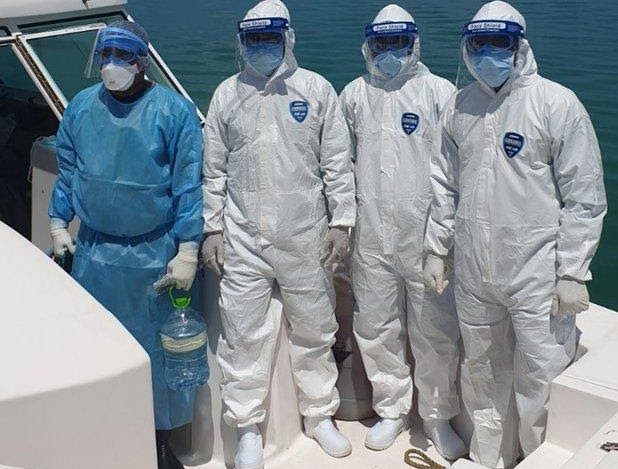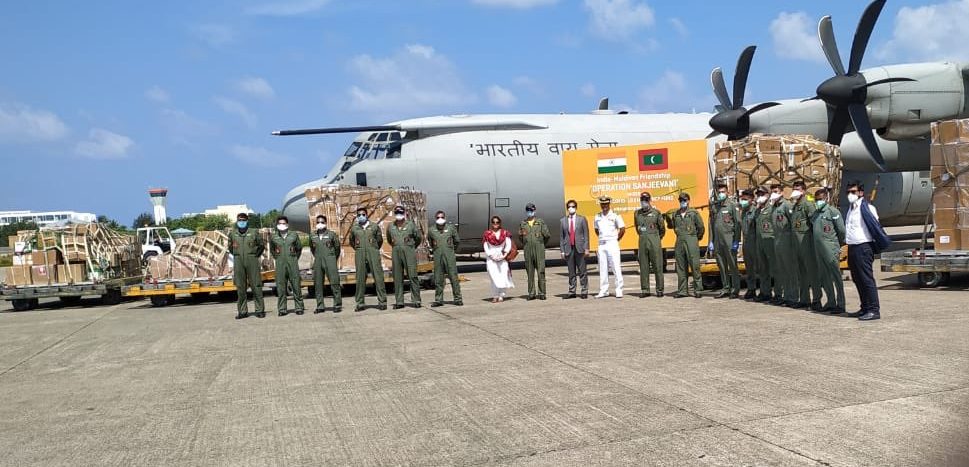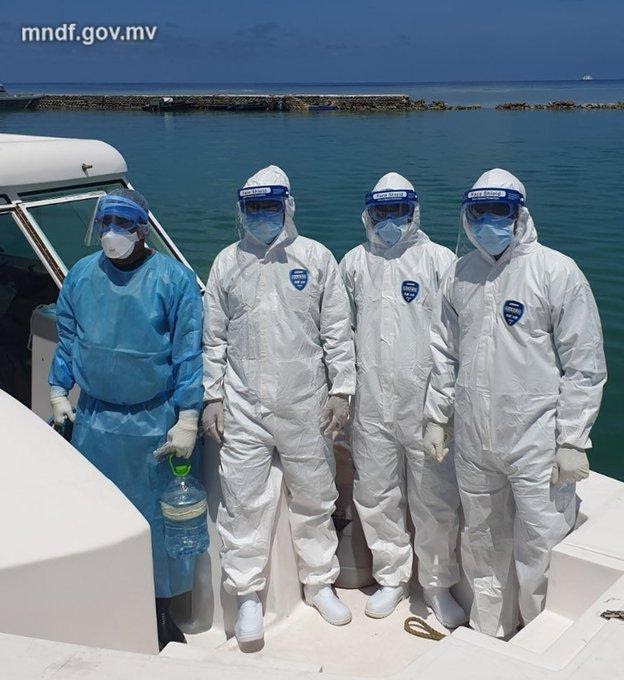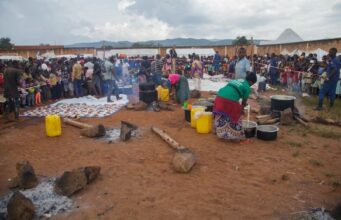NEW DELHI: As the Chinese coronavirus continues its unrelenting march across the globe, StratNews Global casts its eyes around the Indian subcontinent to see how the neighbourhood is coping. Much like India, these countries are densely populated, have poor health infrastructure and lack the wherewithal to deal with a crisis of this magnitude. Many are looking to India for help. In the third part of our series Parul Chandra and Amitabh P. Revi look at how Sri Lanka and the Maldives are coping with the pandemic
Sri Lanka: Coronavirus Crisis Is A Double Blow

For Sri Lanka, the coronavirus or ‘Chinese virus’ is a double whammy. Recall the Easter Sunday attacks last year which hit the country’s tourist economy hard. And just when the tourism sector appeared to be recovering, the pandemic forced the authorities to enforce curfew to prevent the spread of the virus.
Six areas have been classified as High Risk Zones — Colombo, Gampaha, Kalutara, Puttalam, Kandy and Jaffna. The government briefly lifted the curfew in the other districts from 6am to 2pm, a practice which will continue until April 6.
While the number of dead from the coronavirus is small, only three, from the 148 cases that have tested positive, and given the island is densely populated with more than 300 people per square kilometre, the authorities are taking no chances. Police are cracking down hard on those violating curfew with media reports saying nearly 700 persons have been arrested.
The first coronavirus case in Sri Lanka was traced to Italian tourists who passed on the infection to a local tour guide. To check the spread of the virus, the country suspended all incoming international flights on March 17.
President Gotabaya Rajapaksa has been in detailed discussions with Central Bank and his top officials to assess the macro-economic impact of the pandemic. He wants the World Bank and the IMF to step in and “provide debt moratorium or debt re-profiling facilities for vulnerable developing countries like Sri Lanka whose economies depend on tourism, exports, remittances and foreign investment in debt and equity markets.”
Maldives: Fast Mover On Curbing Pandemic

Sri Lanka’s opposition is pushing for a reconvening of the legislature that was dissolved for April 25 elections (now postponed because of the coronavirus pandemic). But the Maldives is probably one of the first in the world to conduct Majlis sessions with parliamentarians debating and voting online on video from home. In the first sitting on March 30, 71 of the 87 MPs voted on a financial support package. Many members also spoke about the need to help the fishing industry bounce back.

The Maldives was also a fast mover, declaring a public health emergency on March 12, five days after two foreigners working at a resort were the first positive cases reported. The Health Protection Agency (HPA) has banned guesthouses on inhabited islands from accepting tourists. The HPA has also barred workers in resorts from travelling to and from the resorts and dine-in services in cafes and restaurants in the capital, Malé have been stopped. In a March 25 press conference, President Ibrahim Solih announced a state of lockdown and cancelled on-arrival visas from March 27.
The Maldives has only 19 positive cases (4 nationals), has isolated 15 patients, quarantined 867 and has no deaths as of April 2. 13 people have recovered according to the health ministry. More patients are recovering than new ones (only 1 in the last 24 hours) being reported with the measures taken by the government.
Though the World Population Review estimates 540,544 nationals, the government has only assigned 200 ICU beds for its ‘worst-case scenario’. The other worrying factor is the high population density of 1,102 people per square kilometer, making it the 11th most packed country on earth. Residents of Malé, a tiny island of less than 2 square kilometres and home to 150,000 people, are being encouraged to stay indoors as much as possible.
The Asian Development Bank says the Maldives will be the worst coronavirus-hit Asian country. Tourism accounts for 60 per cent of foreign exchange earnings. A record 1.7 million tourists visited Maldives in 2019, with 300,000 of them arriving from China, the highest. Before the COVID-19 outbreak, big plans were being made to boost that number to a million Chinese visitors by 2023. The robust growth in 2019 was also driven by India that jumped several places to second position, contributing almost 10 per cent in visitor share, from under 6 per cent the previous year.
China and India were also quick to scramble to assist the strategically located archipelago island nation.

Apart from evacuating Maldivians from Wuhan, New Delhi has shipped 1,000 tonnes of sugar, nearly 2,500 tonnes of rice and 5,000 tonnes of cement from Tuticorin and assured a continuous supply of essential food and 5.5 tonnes of medicines despite the lockdown and reported shortages back home.

In late March, a 14-member medical relief team which included army personnel conducted workshops and training sessions for health professionals across the islands and reviewed the country’s preparedness in a report.

An Indian Air Force C-130J Super Hercules transport aircraft recently flew in with medical equipment and other supplies to the Maldives. The country itself added $200,000 to India’s $10 million SAARC emergency relief fund.

China has donated 843 tonnes of medical protective masks, surgical masks, gloves and protective goggles and clothing as part of its ‘friendship across mountains and seas’ assistance programme.
What about the medium to long term? In a press conference, Finance Minister Ibrahim Ameer admitted on April 1 the state budget will see a MVR 12 billion (MVR 1 – Rs 4.94) deficit because of the virus. The government estimates a 37-50 per cent tourist drop.
The economic impact will affect debt repayment too. In 2018, the Finance Minister revealed that Maldives’ debts to China were $1.4 billion, about 38% of the country’s national debt of $3.7 billion and 78% of its external debt of $1.8 billion. The same year, in December, New Delhi announced a $1.4 billion credit line and budgetary support during President Solih’s visit, coincidentally or not the same amount the Maldives owes China.
















